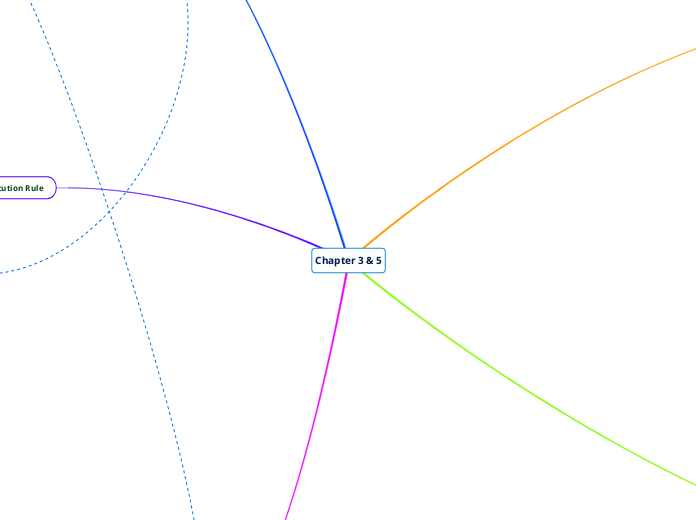Chapter 3 & 5
Curve Sketching
First Derivative Test
When you use the first derivative of a function and set = 0 to find critical numbers or intervals of increasing and decreasing
Second Derivative Test
When you use the second derivative of a function and set = 0 to find inflection points or concavity
Graphing Guidelines
Domain
check for all values of x of f(x) that make the function continuous.
Intercepts
Where f(x) meets the x-axis and y-axis
Asymptotes
Horizontal- use limits
Vertical- when denominator=0
Critical Numbers
Critical numbers are either extrema or discontinuity points
Use derivative of f(x) and set equal to zero
Increasing or decreasing
If F'(x) > 0 then f(x) is increasing
If F'(x) < 0 then f(x) is decreasing
Concavity
If F''(x) > 0 then f(x) is concave up
If F''(x) < 0 then f(x) is concave down
Extrema
Extrema can be found while using first derivative test and mapping out a number line to find positive and negative values.
Derivative goes from positive to negative = max
Derivative goes from negative to positive = min
Derivatives
The derivative of a function is used to find the velocity or slope of a tangent line at a given point.
Finding derivatives
Chain rule
dy/dx f(g(x))= f'(g(x)) * g'(x)
Product rule
dy/dx f(x)g(x)= f'(x)g(x) + g'(x)f(x)
Quotient rule
dy/dx f(x)/g(x)= f'(x)g(x) - g'(x)f(x)/g(x)^2
Implicit differentiation
Derivatives of logs
dy/dx ln(x)= 1/x
Derivatives of polynomials
dy/dx f(x) + g(x) + h(x)= f'(x) + g'(x) + h'(x)
Derivatives of exponential functions
dy/dx f(x)^n= (n*f(x)^n-1) * f'(x)
Derivatives of trig
dy/dx sin(x)= cos(x)
dy/dx tan(x)= sec^2(x)
dy/dx sec(x)= sec(x)tan(x)
dy/dx cos(x)= -sin(x)
dy/dx cot(x)= -csc^2(x)
dy/dx csc(x)= -csc(x)cot(x)
Derivatives of inverse trig
dy/dx arcsin(x)= 1/sqrt(1-x^2)
dy/dx arctan(x)= 1/1+x^2
dy/dx arcsec(x)= 1/x*sqrt(x^2-1)
dy/dx arccos(x)= -1/sqrt(1-x^2)
dy/dx arccot(x)= -1/1+x^2
dy/dx arccsc(x)= -1/x*sqrt(x^2-1)
Integrals
Indefinite
int/ k dx = kx + C
int/ x^n dx = (x^n+1)/(n+1) + C
int/ e^x dx = e^x + C
int/ sin(x) dx = -cos(x) + c
int/ 1/x^2+1 dx = arctan(x) + C
int/ 1/x dx = ln|x| + C
int/ b^x dx = (b^x)/ln(b) + C
Definite
Fundamental Theorem of Calculus
Part 1) If g(x) = int/ [a,x] f(t) dt, then g'(x) = f(x)
Part 2) int/ [a,b] f(x) dx = F(b)-F(a), where F is any antiderivative of f, that is F' = f
A definite integral can be found geometrically via area beneath the curve.
Fundamental Theorem of Calculus
An integral relies on antiderivatives for finding solutions
Net change theorem
The integral of a rate of change is the net change.
int/ [a,b] F'(x) dx = F(b)-F(a)
Substitution Rule
int/ f(g(x))g'(x) dx = int/ f(u) du
u=g(x)
du=g'(x) dx
For definite integrals
int/ [a,b] f(g(x))g'(x) dx = int/ [g(a),g(b)] f(u) du
Substitution rule simplifies integrand
Antiderivatives
Used to revert function from its derivative state to its original state or close to it.
Constants do not have derivatives so functions will sometimes differ while finding the antiderivative. Hence the (+C) behind some functions.
Derivatives that are directly reversable with exception to constants.
Inverse trig
Trig
Polynomials or Exponentials
x^n= (x^n+1)/n+1+C
Logs
